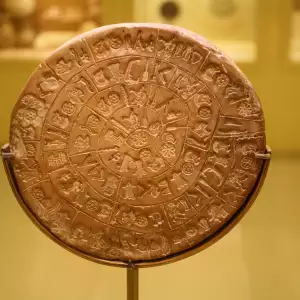The famous Phaistos Disc, a document of inscription text of an usual kind, looks to have finally been deciphered by scientists from the Technological Educational Institute of Crete in Greece.
Dr. Gareth Owens believes that the ancient disc contains a prayer to a Minoan goddess.
Researchers have been to figure out the exceptional artifact for almost a century. They have made all kinds of hypotheses regarding the 241 symbols, consisting of 45 unique signs.
However, Dr. Owens is of the opinion that he has decoded key words such as pregnant mother and lady of great importance. Now the scientists are preparing to decipher the exact meaning of the signs and their use.
The first of its kind "Minoan CD-Rom" was created using an ancient language comprised of signs such as a plumed head, child and beehive. The researchers postulate that it was made in the middle of the Minoan Bronze Age, in the 2nd millennium BC.
The object was discovered by Italian scientists in 1908 in the Palace complex at Phaistos, Crete. It is in essence a round clay disc, covered on both sides with drawn symbols, one after another in a spiral. The disc's diameter is 5.9 in (15 cm).

There are various theories as to how exactly the disc should be read. However, most scientists believe that the signs need to be read starting from the outer edge of the disc and going in.
The decoding of the word mother is considered to be the most reliable, and more specifically, the mother goddess of the Minoans, assures Dr. Owens.
To prove his claim, he had to recognize a group of signs, located at 3 spots on one side of the Phaistos Disc. According to his observations, they are pronounced I-QE-KU-RJA.
IQE means goddess/mother of great importance, explains Dr. Owens.
At the same time he managed to decode the word Aka, which according to him means pregnant mother. Thus the researcher has come to the conclusion that it's highly likely for one side of the Phaistos Disc to be dedicated to a pregnant woman, and the other - to birth.
As he has said, today's CD ROMS carry out the same function as the ancient disc - to store data.












